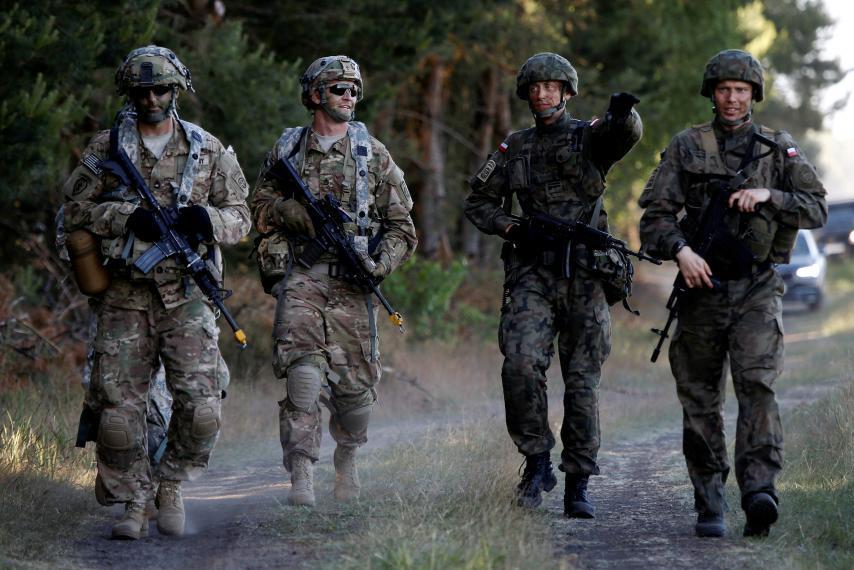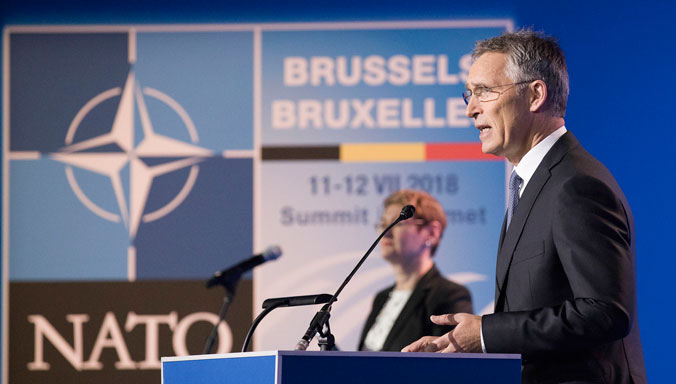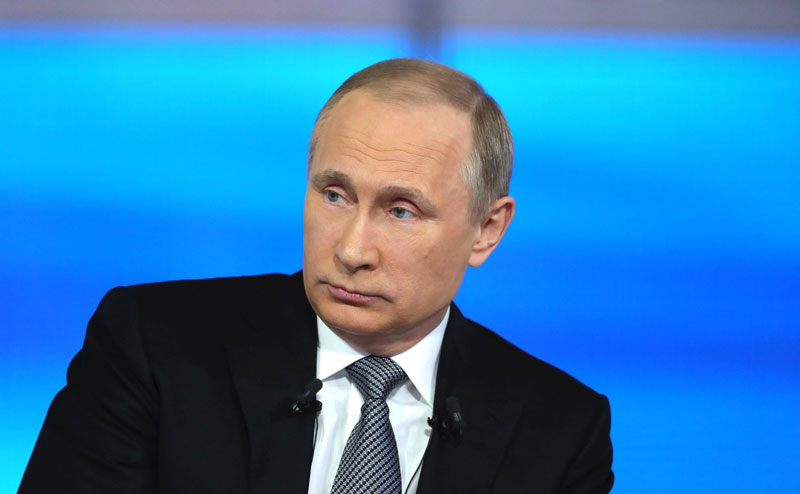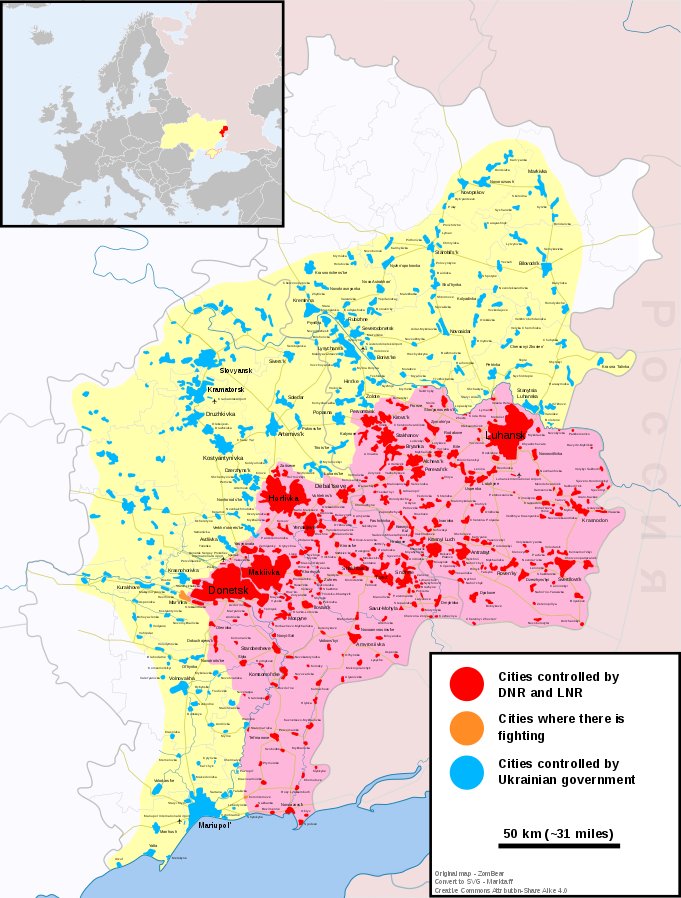Anticipating war is out of fashion, yet the potential destruction and impact on global society of a major war are huge.
By James M R Thorp

Back in February, Elisabeth Braw wrote an article for POLITICO titled, ‘Europe isn’t ready to face modern threats’. Braw’s case is that NATO is ‘preparing for the wrong war’ and needs to ‘become more creative in defending against hybrid attacks’. ‘[H]ybrid’, a term coined by Frank Hoffman, is defined as incorporating ‘a full range of different modes of warfare, including conventional capabilities, irregular tactics and formations, terrorist acts… and criminal disorder’ acting at ‘all levels of war.’[1] Braw’s point that Russia and China have the will and ability ‘to bring a country to a standstill long before a conventional war takes place’ is one that is only just being heeded; for a start, the rate of cyber-attacks has increased dramatically in the last couple of years.[2] But Braw’s article misses the greater issue at hand: Western policies, economics, and its way of life all rely on the notion that war between the leading states of the world is no longer a real possibility. So, not only is the West unprepared for modern ‘hybrid’ threats, as Braw states, but it is almost entirely unprepared for any type of modern major conflict, even a conventional one.
But how likely is such a war and why has that possibility been ignored? Firstly, the world today is increasingly unstable: it faces a resurgent Russia, an unpredictable North Korea, and a ‘Thucydides Trap’ in the form of an increasingly dominant China, which is expanding its power and influence through measures such as building artificial islands in the South China Sea. Secondly, it may be that the US is globally dominant, and any major war would inevitably involve it, but it is rare to find someone who would solidly wager that such a major war (involving the US) would break out in the next five, or even ten, years. Yet, by looking at the case of the UK in the 1860-1910s – like the US now – the UK was globally dominant yet its share of global GDP was declining compared to its rivals, leading to a competition that culminated in the First World War - it is only rational to assume a similar situation could arise by the late 2020s.[3] Despite this, we continue to live in an age where the idea of ‘permanent peace’ is prevalent.
The moral, ethical, economic, and systematic structures that were formed after 1945, a world system dominated by the US and the West, has led to a decrease in conventional war and direct military confrontation; which in turn has led to a widespread global illusion – in the West especially – that the peace is prevalent and violence has been mostly eliminated. In reality, violence has been suppressed; human psychology has not changed enough since we formed as a species for us to have suddenly become incapable of violence. We have and always will be biologically and psychologically capable of both violence and peace, regardless of our moral and ethical systems.[4]
Europe unequivocally relies on the stability of this post-1945 order to remain safe and prosperous. Yet, with President Trump’s unpredictability, largely unknown agenda and open condemnation of NATO, Europe can no longer rely on the US to lead and remain a bastion of deterrence. The US itself stands highly divided, to the extent that the small, but genuine, chance of a second American civil war has become a talking-point amongst some security experts.[5] Similarly, Europe and the EU also stand divided, with waves of nationalism sweeping through, particularly in Austria, France, Italy, Spain and the UK. If one is to consider global issues that will greatly impact Europe, climate change is an existential threat that has the potential to violently destroy not just the post-1945 order, but our global society as we know it.[6] But, after the US pulled out of the Paris Climate Accord in 2017, neither can Europe rely on the US to lead us through that, nor is there much evidence to show that anyone in Europe is realistically stepping up to the challenge.
Then, in spite of these weaknesses among its members, NATO on the one hand is a powerful alliance with over three million troops and around ten thousand tanks, making it a force that is certainly to be reckoned with. But on the other hand, this force is significantly weakened by certain factors. As a fighting force weapons systems are disparate, for example 20 different types of fighter aircraft are used; in-theatre hierarchies and command systems are unclear [7]; and most importantly, there exists an adversary with capability to exploit NATO’s ‘Article 5’, by obfuscating whether a member state has been attacked by another state[8]. Then, despite NATO’s European Reassurance/Deterrence Initiative and the very recently announced ‘Four Thirties’ Plan, defence spending across member states has dramatically reduced over the past decade or two and it remains to be seen whether defence spending promises will be kept.
Perhaps most important of all is one of the key lessons taught to us by the father of modern military strategy, Carl von Clausewitz: that chance is an intrinsic feature of war[9], and because war is, in his words, a ‘continuation of policy with other means’, so too then is politics affected by chance[10]. If chance cannot be eliminated, it follows that the possibility of any type of war can never be eliminated from political interaction. On top of that, wars of a more ‘hybrid’ or ‘grey zone’ nature have become, and will continue to be, an even greater possibility.[11]
Some European leaders may have taken certain measures to prepare for a major modern war, including promises to achieve or come close to the two percent of GDP expenditure benchmark on defence. But are such promises little more than lip-service to NATO and the USA, with only four nations in Europe achieving the benchmark last year?[12] If one considers that the world’s population has grown faster than exponentially[13], leading to massive urbanisation – two-thirds of the world’s population in cities by 2040 –, it becomes entirely probable that a modern major war would be indiscriminate and catastrophic.[14] Then consider what this article has highlighted regarding the likelihood of such a war. Taking this combined consideration, it then follows that despite NATO’s usually significant efforts, defence measures by European leaders are not nearly enough, that most politicians are repeatedly betting on war not occurring and the European public are kept blissfully unaware of a perilous future. Meanwhile, the stakes remain high, and the gamble is at the greatest level.
James is a recent MA Intelligence & International Security candidate at the Department of War Studies, King’s College London. He graduated in January 2018 and is currently based in both Suffolk and London. You can find him on LinkedIn: https://www.linkedin.com/in/james-thorp-280595/
Notes:
[1] Frank Hoffman, Conflict in the 21st Century: The Rise of Hybrid Wars, (Arlington, Virginia: Potomac Institute of Policy Studies, December 2007), p. 8.
[2] Cyber-attacks increased by double in 2017, with Russia the main source of activity, see ‘Cyber-attack Volume Doubled in First Half of 2017’, Infosecurity, 11 August 2017.
[3] Look at the graph on page 335 and then go to pages 338-340, see Ian Morris, What Is War Good For: The Role of Conflict in Civilisation, from Primates to Robots, (London: Profile Books, 2015), p. 335 & pp. 338-340.
[4] Steven Pinker, in his seminal work, ‘The Better Angels of Our Nature: Why Violence Has Declined’, highlights this inner battle within humans, who ‘are equipped with five distinct motives of violence, and four faculties that allow them to inhibit or avoid violence’, see Steven Pinker, ‘Frequently Asked Questions about The Better Angels of Our Nature: Why Violence Has Declined’
[5] See Chris Arkenberg, ‘What a new U.S. civil war might look like’, Foreign Policy, 10 October 2017 & Lt. Col. Robert F. McTague, ‘Some thoughts on how we might get from where we’re at now to a Second Civil War’, Foreign Policy, 10 October 2017.
[6] For the NATO special report on this, see ‘Special Report: The Importance of Climate Change for Transatlantic Security’, NAOC, 29 November 2017, also see Steven Jermy, ‘Perfect Storm?’, Russian International Affairs Council, 12 August 2013.
[7] This was displayed very clearly within ISAF in Afghanistan: ISAF was a coalition made up from NATO members and due to inequal commitments, cultural differences and (often) incompatible caveats a potentially unified command structure was fractured - information taken from lecture by Lt. Gen. (Ret.) Jonathan Riley, King’s College London, 17th November 2016. See also Kathleen J. McInnis, ‘Lessons in coalition warfare: Past, present and implications for the future.’ International Politics Reviews, 1.2 (2013), pp. 78-82.
[8] Russia’s ‘little green men’ in Ukraine being a case in point, see Robert R. Leonhard and Stephen P. Philips, “Little Green Men”: A Primer on Modern Russian Unconventional Warfare, Ukraine 2013-2014 (Fort Bragg, NC: US Army Special Operations Command, 2015), p. 3 & 43.
[9] Carl von Clausewitz, ‘On War’, (Oxford: Oxford University Press, 2008), p. 7. University Press
[10] ibid, p. 30.
[11] For “grey zone” see United States Special Operations Command White Paper: The Gray Zone, September 2015, p. 1.
[12] Only France, Greece, Poland and Romania spent over 2% of GDP on defence in 2017, see ‘SIPRI Military Expenditure Database’.
[13] Simon Lewis & Mark Maslin, The Human Planet: How We Created the Anthropocene, (London: Penguin, 2018), pp. 6-7.
[14] ‘The Future of War: the new Battlegrounds’, The Economist, 25 January 2018.
Image Source: https://www.newsweek.com/europeans-are-quietly-preparing-war-russia-487307




 The second prong of this reimagining of wargaming is the asymmetrical case. RAND’s analysis focuses on the capabilities Estonia would need to repel a conventional Russian invasion; yet, Estonia may not need to fight a conventional conflict at all. While many analysts seem to assume Russia’s will to sustain military casualties is monolithic and endless, the Chechen Wars of the 1990s demonstrated that
The second prong of this reimagining of wargaming is the asymmetrical case. RAND’s analysis focuses on the capabilities Estonia would need to repel a conventional Russian invasion; yet, Estonia may not need to fight a conventional conflict at all. While many analysts seem to assume Russia’s will to sustain military casualties is monolithic and endless, the Chechen Wars of the 1990s demonstrated that 